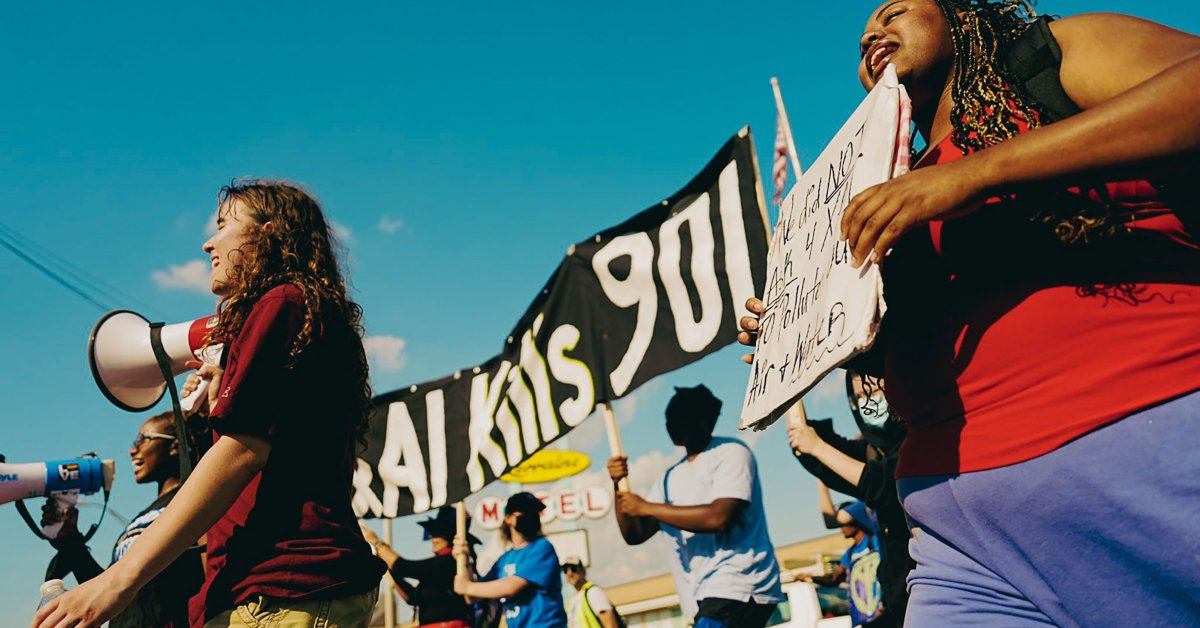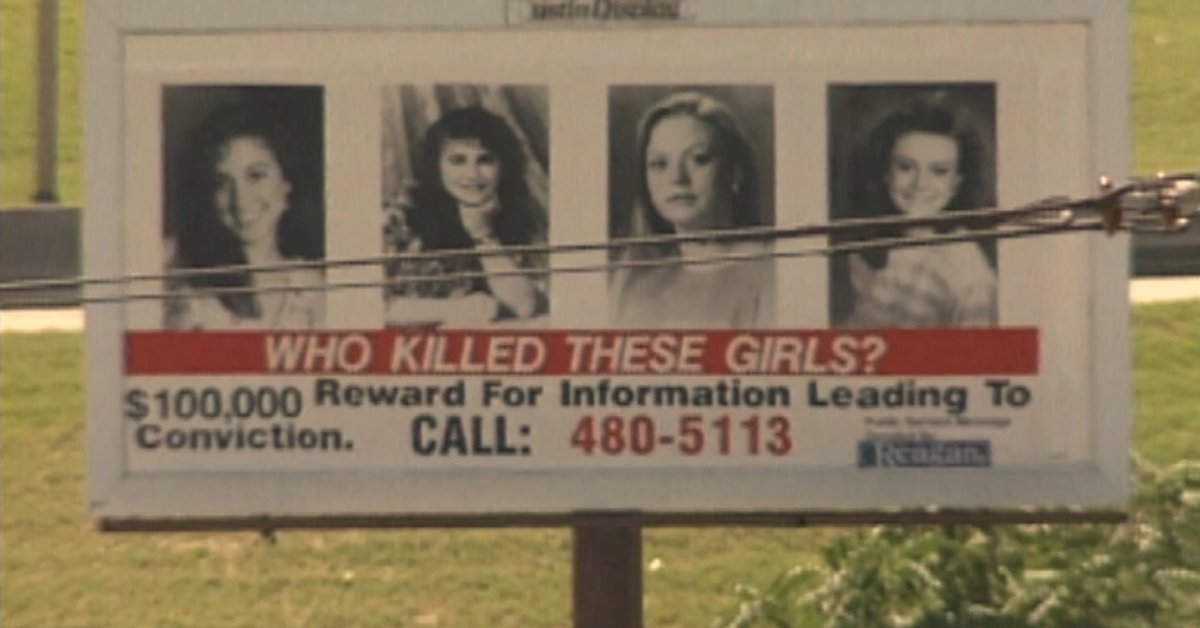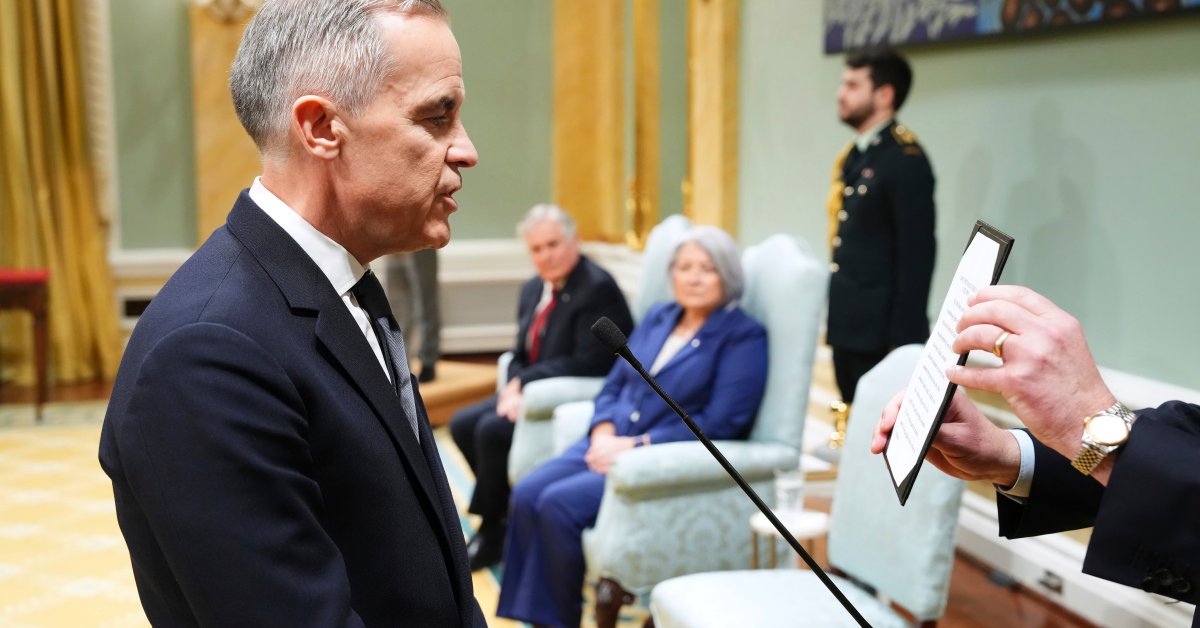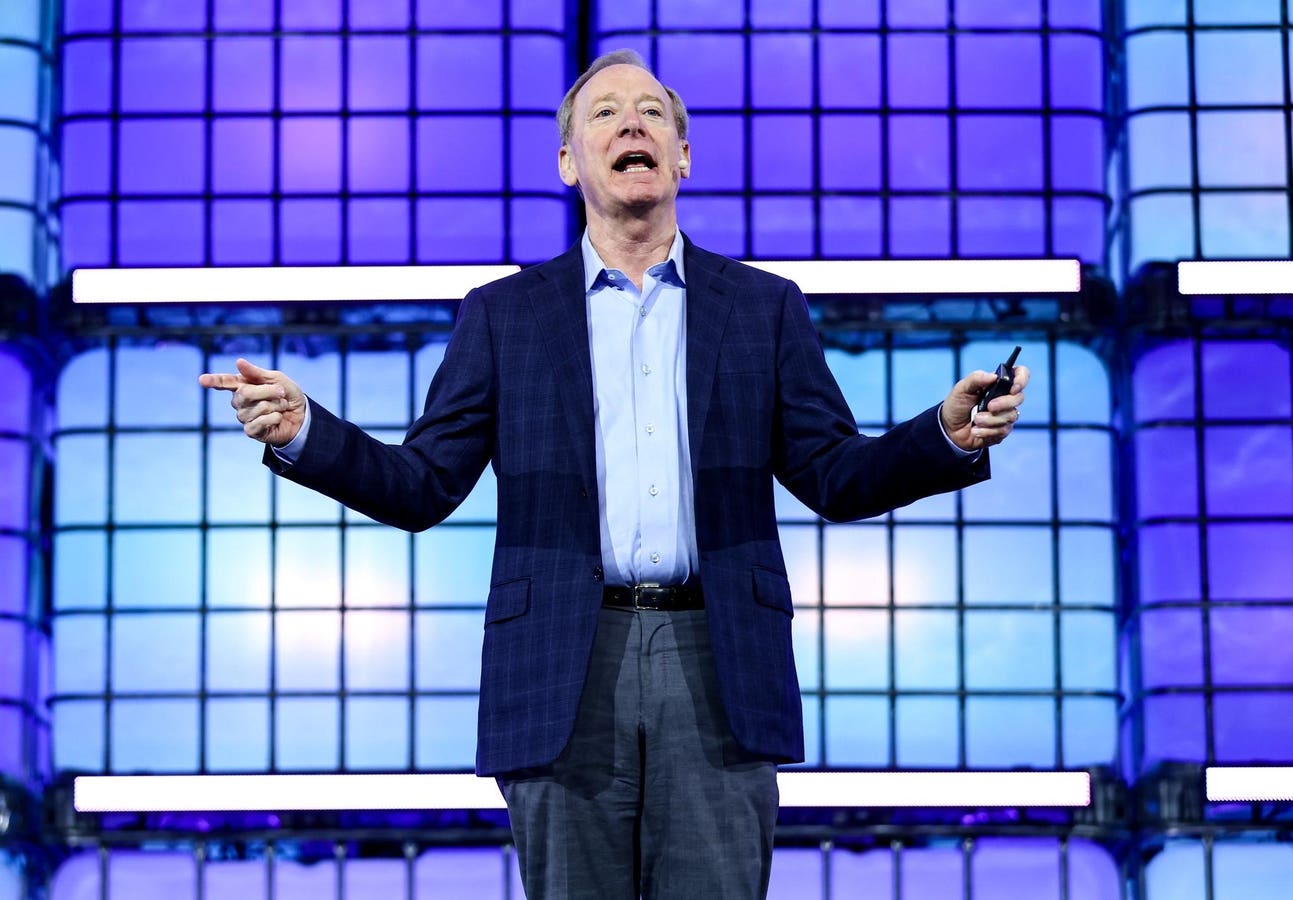
Five days after Elon Musk’s Grok 4 became one of the most powerful large language models in the world, Alexis Humphreys had her first severe asthma attack in 15 years. She laid down in her house in Boxtown, Memphis in the humid, sticky summer, struggling to breathe, inhaling a smell of gas that had started wafting into her neighborhood about a year before. “It felt like my chest was caving in,” Humphreys, 28, says on her front porch a couple of days later.
[time-brightcove not-tgx=”true”]
Environmentalists and community activists say this is no coincidence. Boxtown, a predominantly Black community with a median income of $37,000, sits a few miles from where Musk, driven by ambitions of creating an AI smarter than humans, set up the self-proclaimed biggest supercomputer in the world last year. The supercomputer, named Colossus, consisted of a staggering 230,000 Nvidia GPUs, a sheer training power that allowed Musk to vault past his competitors in key benchmarks. Nvidia CEO Jensen Huang, another AI titan, praised Musk’s rapid buildout of the site as “superhuman.”
But all of those computers need a vast amount of energy to run. Fueling them has been 35 unpermitted temporary gas turbines, which have been pumping out a level of emissions that, according to environmentalists, is exacerbating the health issues of an area already crushed by decades of pollution.

Researchers at the University of Tennessee, Knoxville, at the request of TIME, ran an analysis on the air quality in South Memphis over the last couple of years, based on public satellite data from NASA and the European Space Agency. They found that average concentrations of nitrogen dioxide have increased by 3% when comparing the periods before June 2024 and afterward. They also found that peak nitrogen dioxide concentration levels have increased by 79% from pre-xAI levels in areas immediately surrounding the data center, and by 9% in nearby Boxtown.
Because high concentrations of air pollutants pose greater health risks than lower concentrations, the researchers said, focusing on these spikes—rather than just averages—offers more meaningful insight into potential health impacts. It’s the first major effort to quantify the turbines’ environmental impact using publicly available data.
“These changes in pollutant concentrations likely reflect the combined influence of natural gas-fired emission sources in the area, including both the new xAI facility and the increased utilization of the Allen power plant,” wrote Joshua Fu, a civil and environmental engineering professor, and Zhixu Sun, a PhD student.
Austin Dalgo, an academic primary care physician in South Memphis, calls the jump in peak nitrogen dioxide concentration levels “alarming,” and believes that they “significantly increase the risk to residents’ health.” The EPA writes that a high concentration of NO2 can aggravate respiratory diseases, particularly asthma.
“The xAI turbines are leading to a public health crisis in Memphis by releasing nitrogen oxides—pollutants known to directly harm the lungs,” Dalgo tells TIME. “These emissions pose the greatest risk to our city’s most vulnerable residents, including children, the elderly, and individuals with respiratory conditions like asthma and COPD.”
xAI—and its boosters, such as the Greater Memphis Chamber of Commerce—insisted the turbines were legal, generated negligible amounts of pollution, and were only temporary: they said in April that the units would be replaced with cleaner models featuring pollution controls, a change they later claimed was carried out this summer. Those upgrades, the company’s local representative, Brent Mayo, told a permit hearing in April, would make xAI “the lowest-emitting facility in the country.” (xAI did not respond to a request for comment for this story.)

Community members believe that the damage is already done, and that xAI’s approach sets a dangerous precedent for other companies to pollute without regulatory oversight, as long as they are doing so on a “temporary” basis. In June, the NAACP sent an intent-to-sue notice to xAI for violating the Clean Air Act, arguing that the company failed to obtain the necessary permits or pollution controls for the turbines. But the lawsuit seems unlikely to get traction from President Donald Trump’s Environmental Protection Agency (EPA), which just shuttered the scientific research arm that analyzes environmental hazards.
Now, Musk is building an even bigger data center at a different site a few miles away in Whitehaven, which he brags will be double the size—and run on a power plant imported from overseas. In August, 66 more gas turbines paid for by an xAI subsidiary were delivered to that site, although it’s unclear how they will be used.
AI data centers are exploding in number across the country alongside Trump’s AI Action Plan, released in July, which calls for the expediting of data center permitting by reducing regulations imposed by the Clean Air Act and the Clean Water Act.
AI boosters like Musk tend to talk about AI progress in global or even intergalactic terms. They say that powerful AIs will cure cancer, fight climate change, and turbocharge productivity. But their quest to transform humanity may be coming at the expense of actual people. “Our lives and our lungs are being sacrificed on the altar of their capitalistic exploitation,” says Justin Pearson, a Tennessee state representative for parts of Memphis, including Boxtown.
“Imagine the outcry if these facilities had been placed next to St. Jude Children’s Research Hospital, no one would allow it,” says Dalgo. “Instead, they were placed in the backyard of a historically Black, underserved neighborhood, reinforcing a long legacy of environmental racism in Memphis—and our country.”
Elon’s Deal
xAI’s first Memphis data center sits on the banks of the Mississippi, a 15-minute drive from downtown. To the casual observer, there’s little that distinguishes it visually from the other facilities in the heavily-industrialized area, which include a power plant, a wastewater plant, and a steel manufacturer. But it’s clear something substantial is happening inside: the ground hums with activity, and from the road outside the fences, air above its turbines appears to glitch and flicker as they pump out fumes.
AI is America’s newest big industry—and Elon Musk is intent on controlling its most powerful systems. Driven by fears of what would happen if AGI (artificial general intelligence) were to be developed in the wrong hands, Musk has plowed billions of dollars into developing the technology. But his first big bet in the space—on the young entrepreneur Sam Altman and OpenAI—ended in a bitter breakup.
Musk publicly questioned whether Altman could be trusted with AGI, and started building his own rival project: xAI, which he announced in 2023. At that point, Musk was several years behind his competitors. He needed to find a location to quickly start training his AI, with as ample energy and water—and as little red tape—as possible.
Musk found a willing partner in Memphis, a city with deep economic challenges. In 2024, Shelby County, where Memphis sits, led the nation in population decline. And because Tennessee does not collect income tax—which it repealed in 2021—its governments are reliant on businesses coming to the state to pay property taxes.
“Property taxes are the mother’s milk of how government is funded,” says Bobby White, chief government affairs officer at the Greater Memphis Chamber of Commerce. “And we have not, historically, had people tripping over themselves to get to Memphis. We have to go get it out of the mud.”
In 2024, xAI came calling about a large, vacant manufacturing lot: a former Electrolux plant, which had arrived in 2013 with $188 million in subsidies, promising good, long-term jobs. But six years later, the company announced it would close shop and lay off 500 employees, marking yet another corporate letdown for the city. “Memphis is a cash cow for everybody but us,” says Orion Overstreet, a Memphis college student and activist. “It has always been a very extractive story, where we get stuck as the dumping ground for corporations.”

The Electrolux site seemed ideal to xAI: in an industrial zone, proximate to a power plant and a wastewater facility. When xAI inquired about the site, and didn’t ask for property tax abatements, many politicians and local agencies were elated. The scope of the project meant that it was projected to generate an estimated $25 million or more in property taxes for Memphis during every year of operation.
So xAI forged ahead quietly and quickly, signing NDAs with key players, including Memphis Gas Light and Water (MGLW). Memphis Council Member Yolanda Cooper-Sutton says she heard about the project on the news. The data center was built in a matter of months, with xAI insiders calling it “the largest AI datacenter on the planet.”
Musk was ready to train his AI Grok in Memphis, but there was just one problem: MGLW couldn’t provide nearly enough power for Musk’s needs. In August 2024, MGLW said that xAI would have access to 50 megawatts of power. But xAI wanted to use triple that amount: enough energy to power 80,000 households.
So he brought in 35 methane gas turbines, which had a combined generating capacity of 421 megawatts, comparable to entire Tennessee power plants. Based on manufacturer-supplied emissions data, these turbines have the potential to emit between 1,200 and 2,000 tons of smog-forming nitrogen oxides (NOx) a year, which would eclipse the output of the Memphis airport.
In April, Memphis Mayor Paul Young, who has been supportive of the project, said that the turbines were only there as a backup power source, and only 15 of them were in use. But environmentalists used thermal imaging and found heat coming off of 33 of the 35 turbines. The turbines, based on their visual makes, did not appear to be equipped with emissions control technology, says Amanda Garcia, a senior attorney at the Southern Environmental Law Center, which represents NAACP in its legal actions against xAI.
“These 35 turbines: we have never seen anything like this in Memphis or elsewhere,” says Garcia. “They essentially set up a power plant without getting a permit.”
A representative for Mayor Young did not make him available for comment.
The Boxtown Resistance
Easter Knox, 76, started smelling gas in the air last year, and stopped opening her windows. “It smells like rotten cabbage early in the morning,” Knox says, three miles down from the data center. “It’s been a struggle, breathing this little air that’s coming through.”
Knox knows all too well that Memphis’s air wasn’t exactly clean before xAI arrived. Shelby County received an F from the American Lung Association’s most recent State of the Air’s ozone report. The city ranks second in the nation in terms of asthma-related ED visits in the nation and seventh in asthma-related deaths. And the city’s ozone levels regularly exceed national minimum air quality standards.
Boxtown, where Knox has lived for five decades, has been particularly crushed. Once a community for freed slaves after the Civil War, corporations flocked to the area in the 20th century to set up giant industrial plants. In the 1940s, the U.S. military came to South-Central Memphis and disposed of waste such as oil, grease, and paint thinners into the soil; decades later, it was declared a superfund site. A Sterilization Services of Tennessee facility was finally closed last year after emitting ethylene oxide into the air for decades, which the EPA linked to increased cancer risk in South Memphis. A 2013 study found that Southwest Memphis’s cancer rate is four times the national average.
Knox’s family is represented in those cruel statistics: Her father and brother died from cancer, which she believes was related to the nearby Valero oil refinery. Knox was diagnosed with COPD last year, and her husband, Starrie, also suffered from asthma and COPD before dying in June from cancer. “We are the last of the forgotten out here,” she says.
As Knox sits under a shaded pavilion in Boxtown on a July afternoon, the air is stifling: glasses fog up in the humidity, and the metal weights on a communal bench press scald to the touch. Though some houses in the neighborhood are crumbling, there are also plenty of signs of community care around her, in the form of flower beds and shady places to sit. “It’s God’s given air, and man shouldn’t take it away from us,” she says. “I don’t care how much money you got.”
As Knox talks, a crowd gathers and nods in assent, offering their own stories of decades of trauma and neglect.
“I got a lot of relatives, my mother and father, buried up there at my church with breathing problems, cancer, lung problems,” says Willie Joseph Stafford, an 80-year-old lifelong Boxtown resident. “Nobody seems to care about what’s causing it and what we can do to solve it. Instead of them trying to do that, they come out here and put more pollution on us.”
For Musk, the Electrolux plant was simply a good deal. To the residents of Boxtown, it was another threat upon their lungs. Gas turbines release smog-forming pollution and hazardous chemicals like formaldehyde—which are tied to increases in asthma, respiratory diseases, heart problems, and certain cancers. People who already have respiratory issues are at greater health risk to any increase in pollution.
Dalgo, who works at several clinics within 15 miles of the data center, says he sees many patients with breathing issues. “I’m pretty surprised at how many people come in with respiratory problems, or need an inhaler to get around day-to-day without having wheezing symptoms,” he says. “I think their respiratory issues are being exacerbated because they’re experiencing high levels of nitrogen oxides … I wouldn’t be surprised if some of the respiratory issues that I’ve seen are directly related to the tonnes of nitrogen oxides that are being put in the air by these turbines.”
In April, hundreds of people showed up to a public hearing held by the Shelby County Health Department over xAI’s air permit for permanent turbines, and voiced their complaints one by one. “Why can’t we breathe at home?” Humphreys asked at the meeting.
Public outcry has continued. On one Tuesday evening in July, about 75 protesters gathered by the student coalition Tigers Against Pollution marched in front of the Shelby County Health Department, holding signs that read “Elon XiPloits” and “our lungs / our lives / NOT FOR SALE.”
One of the marchers was Christian Dennis, a 22-year-old South Memphian whose grandmother died of cancer, despite not smoking or drinking her whole life. “They call us anti-business extremists,” he says. “To receive that reaction simply from wanting clean air, wanting equal health opportunities—It just tells you a lot about people.”

The protest garnered support from passing cars. A fire truck drove by and honked its deafening horn, with firefighters holding up fists. When a Tesla Cybertruck—which has effectively become a symbol of Musk himself—stopped alongside the protest, protestors began jeering. But then the driver rolled down his window and leaned toward the crowd. “I’m on your side!” he shouted, before driving away.
Power and Promises
Boxtown residents and protesters are making a lot of noise. But they’re running up against the city’s power players—most notably the Greater Memphis Chamber of Commerce, which helped bring xAI to the city. “We’re seeing something pretty magnificent happen that is going to be tremendously beneficial to the city,” Bobby White, the Chamber’s government affairs officer, told TIME at the Chamber’s offices downtown.
When you walk into the Chamber and turn right, the first thing you see is xAI’s logo: the main conference room is emblazoned with the title “xAI Digital Delta Center” in big, frosted lettering. White explains that while the Chamber used to be primarily funded by the government, it now relies on private funding—and xAI has become its biggest investor in short order. “We do sponsorships. You can put your name on the wall, too,” he says.
White is keen to list the reasons why xAI will uplift Memphis. xAI’s property taxes will inject millions into public projects to beautify the city and fix infrastructure, he says. Musk has agreed to supply Tesla Megapack batteries that will help fortify the grid during periods of peak demand to safeguard from blackouts. xAI’s presence in the area is bringing other companies to an area that desperately needs jobs and investment. And the company has agreed to finance renovations for four schools near their data centers.
Another key potential benefit involves water. Data centers use a vast amount of water to cool their computers, sometimes drawing from the local drinking supply. When xAI moved to Memphis, water activists became concerned that the company would try to draw from the aquifer that sits below the city and contains some of the purest water in the country.
Instead, Musk started work on an $80 million wastewater plant down the road from his facility, which would treat sewer water and repurpose it for xAI’s uses. Crucially, other nearby entities, including the Tennessee Valley Authority and Nucor Steel, have agreed to use it once it’s ready, taking them off the aquifer. Sarah Houston, the executive director of the nonprofit Protect Our Aquifer, calls the treatment plant a “huge step in the right direction” towards protecting the drinking water of Memphis.
Houston, however, remains wary of the project’s future. “Building infrastructure for the oligarchy is a really scary path to start walking,” Houston says. “If xAI folds and leaves, how do we ensure this facility continues to operate? Public interest should not be based on profits. It should be based on our core needs, one of which is clean drinking water.”
But those in power are attempting to convince Boxtown residents that xAI’s presence will actually benefit them most. Mayor Young has proposed an ordinance that 25% of xAI’s property taxes go straight to infrastructure improvements within five miles of its data centers. The ordinance, the mayor told Memphis council members, would help “bring back dignity” to Boxtown and nearby communities, financing potholes, street repair, home repairs, and social services. It is slowly working its way through the city council process this summer.

Some Boxtown community members are pacified by this idea. But Representative Justin Pearson is not one of them. “There’s no amount of money that can persuade me to accept pollution killing me and my family,” he says. He likens the funding to a bribe, and contends the community has not been given legitimate input into how the money might be allocated.
He adds that Boxtown should not have to sacrifice its air quality for fundamental services like getting its trash picked up and its potholes filled. “It is sickening that the only way we’re going to be able to get any financial benefits from our government is by accepting the death-dealing pollution, xAI plant tax,” he says.
Other community members say that past projects have offered similar promises, only for them to not pan out. “When someone says that this percentage of tax revenue will go to this thing, it’s hard to trust that, because it hasn’t in the past,” says Amber Sherman, a Memphis policy organizer.
Debating the Data
As xAI’s defenders stress its potential benefits, they also contend that the environmental criticisms are overblown. White, for instance, argues that there’s no evidence xAI is doing anything “that is not legally, or in terms of existing policy, allowable.” He adds: “We have folks who will go to these community meetings and complain about temporary gas turbines, half of which have already disappeared, and they’ll be driving a car that’s smoking, looking like they’re cooking barbecue in the back.”
There have been no significant studies on the turbines’ impact on Memphis air quality. Proper air quality testing is expensive and requires rigorous reporting over a long period of time. It is also exceedingly hard to pinpoint xAI’s exact impact, given the many other industrial facilities in the area.
Most relevant governmental agencies have avoided looking into the turbines’ impact in a meaningful way. The Shelby County Health Department said the turbines, because they were temporary, fell under the oversight of the EPA. (In July, its director Michelle Taylor announced she was leaving the job for a Baltimore post.) An EPA spokesperson said in July that the agency was working with the local health department to review concerns.
The health department subsequently approved xAI’s permit request for 15 permanent gas turbines, which it said would be used strictly as backup, and said that the temporary turbines were fine as long as they were removed within a year. They added that the permanent turbines would have state-of-the-art emissions control which would make their health impacts negligible.
The City of Memphis tried to assuage concerns by commissioning its own study, which found the air in Boxtown and Whitehaven was safe. But some air quality experts raised questions about the study’s methodology, which only took readings from three locations over two 12-hour periods, and placed monitors underneath buildings in a way that may not have conformed with EPA guidance. “Most importantly, the monitors did not even measure one of the most important air pollutants at issue here, which is ozone or smog,” says Garcia of the SELC.
In April, University of Memphis professor Chunrong Jia declared that, based on his modeling, the turbines did not threaten local air quality, but conceded that there was “huge uncertainty” around the modeling process, especially because it was based on data provided by xAI rather than on independent air monitoring. Jia did not respond to a request for comment.
In July, Memphis Communities Against Pollution, a group led by Justin Pearson’s brother KeShaun, announced that it was conducting its own $250,000 study to install nine air quality monitoring devices in the city. Pearson says a full report from the study will likely be available in September.
Meanwhile, TIME asked researchers at the University of Tennessee, Knoxville to run an analysis of the air quality in South Memphis based on publicly available data from satellites: NASA’s TEMPO instrument, and ESA’s Tropomi. After screening for cloud cover, outliers, and using de-weathering techniques, they found “distinct temporal patterns across pollutants following the commencement of xAI facility operations.” When adjusted for meteorological variability, they found that nitrogen dioxide jumped by 3% in the post-xAI period, with peak episodes observed in late 2024.
“These findings suggest that emissions from the xAI data center and associated transportation activities may be contributing to air quality changes in ZIP code 38109,” wrote Joshua Fu and Zhixu Sun in their analysis.
The researchers also found that the concentration levels of nitrogen dioxide hit far higher peaks after the turbines moved in, with the maximum value of hourly NASA data increasing by 79% compared to that of the pre-xAI period. “Since high concentrations of air pollutants pose far greater health risks than lower concentrations, focusing on peak values or upper-percentile concentrations provides more meaningful insight when evaluating potential health impacts,” Sun wrote.
The researchers noted that some of those emissions may be coming from the TVA power plant nearby. But TVA allocated 150 megawatts—about 13% of the plant’s capacity—to xAI in 2024, according to data the researchers reviewed from the Energy Information Administration. They also noted that motor vehicles may have contributed to the rise in nitrogen dioxide.
A High Pain Threshold
xAI is currently building out a second location just a few miles away, in Whitehaven, which will be double the size of the first one, with 550,000 Nvidia GPUs. The site needs so much power that Musk may be shipping a power plant from overseas. While Musk has talked about the importance of “maximum transparency,” details around the site’s power, water and environmental impact are essentially unknown. In August, the Memphis newspaper Commercial Appeal found in SEC filings that an xAI subsidiary had paid for 66 natural gas turbines, and had them delivered to the Whitehaven site.
Musk says his goal is to bring the equivalent of 50 million NVIDIA supercomputers online within five years. The result of all this power? The ever-increasing capability of xAI’s large language model Grok, which X users now look to as a source of truth. In July, Grok 4 outperformed its rivals on many benchmarks, most notably math-problem solving. In the same month, Grok also referred to itself as “MechaHitler,” made anti-semitic statements, and gave TIME instructions to make fentanyl. Concurrently, xAI announced a contract with the U.S. Defense Department worth up to $200 million to develop tech tools for America’s military.
Musk’s acceleration is only spurring forward his competitors to build their own data centers, too—and the Trump administration is cheering them on. The EPA’s leader, Lee Zeldin, wrote in Fox News that he wants to “clear the way for data center and AI development across the U.S.” In March, Zeldin announced that he, with the assistance of Musk’s DOGE, had slashed more than $2 billion in EPA funding.

This posture from the EPA makes it unlikely they will take action against the NAACP’s imminent lawsuit against xAI’s turbines. Abre’ Conner, the director of the Center for Environmental and Climate Justice at the NAACP, sees xAI’s Memphis conflict as part of a much larger struggle. “For decades, we know that the decision to place more pollution in certain communities has disproportionately impacted Black communities and other frontline communities,” she says. “And now with the data center boom, many are looking at places that have already been considered sacrifice zones.”
Musk hasn’t responded to the community complaints in Memphis. As always, he has his eye on the horizon, and beyond: He’s talked extensively about the importance of having a “high pain threshold” in business in pursuit of lofty goals. Maybe Grok, if powerful enough, will indeed help us “understand the true nature of the universe.”
But Justin Pearson and other Boxtown community members see Musk as just the latest in a long line of extractive figures, who think they can treat Memphis like pawns on a chessboard. “We are hurting and dying from these illnesses, and so the way that they came in tells us everything about what they think about us,” he says. “They do not care.”
This story was supported by Tarbell Grants.








